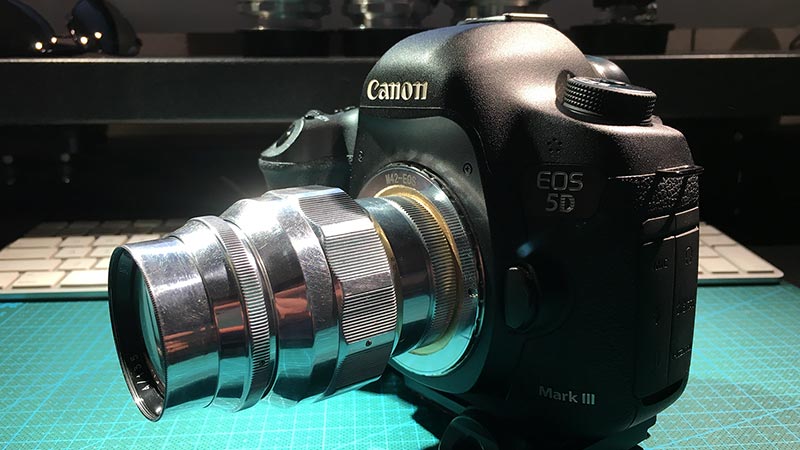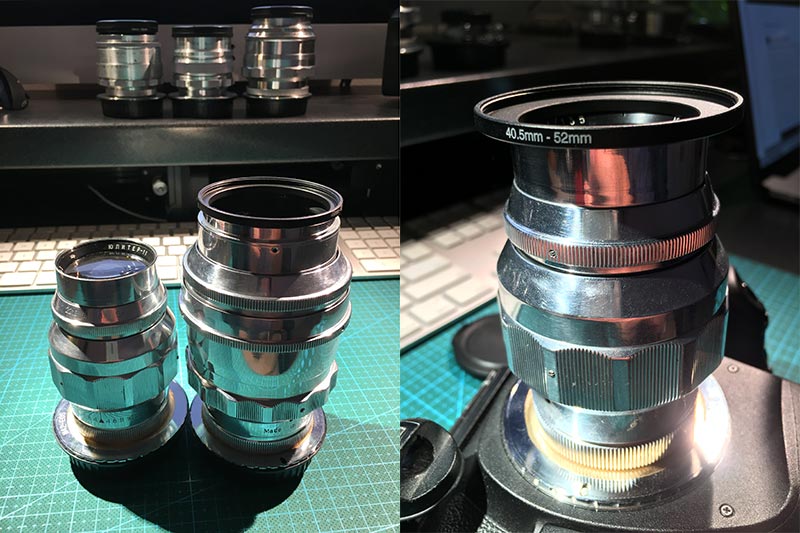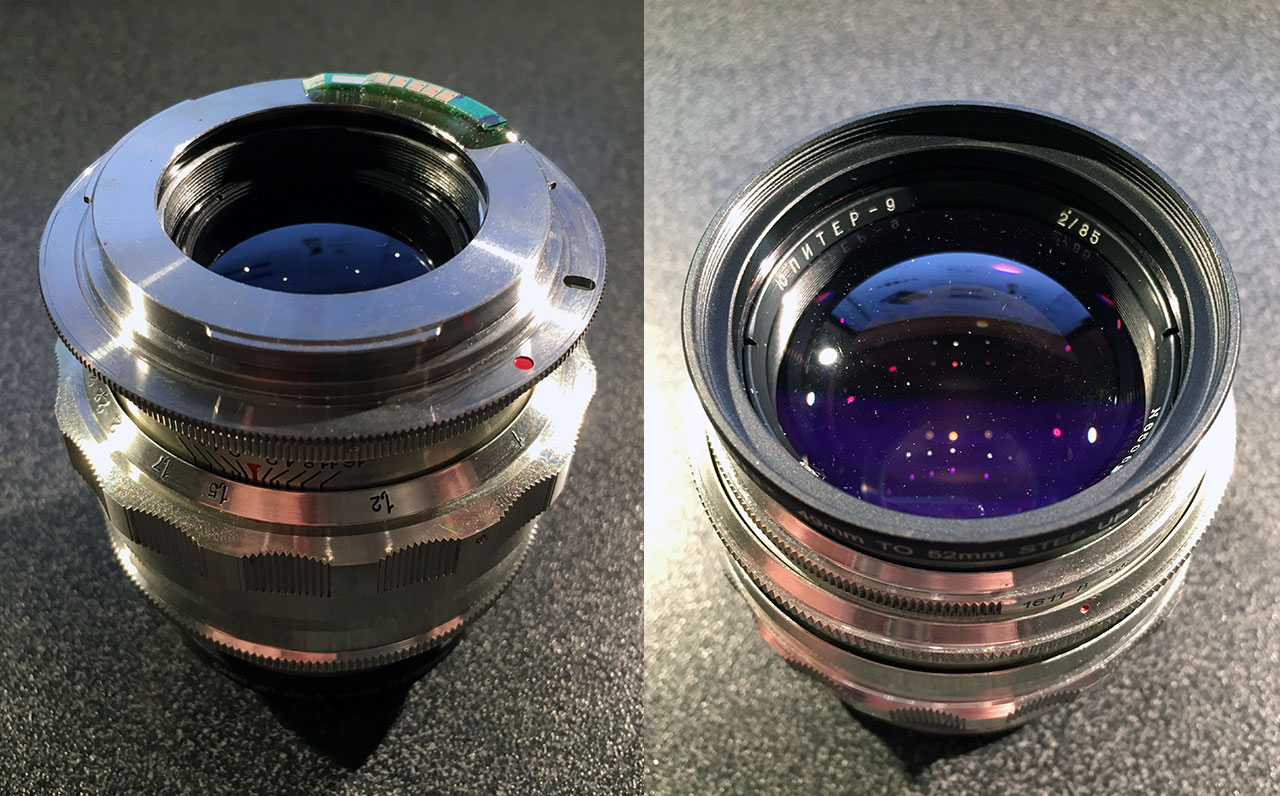
Jupiter-11 4/135mm
Having rounded out my Soviet prime collection with the Mir-1 2.8/37mm, Helios-44 2/58mm, Jupiter-9 2/85mm and Tair-11 2.8/133mm, this Jupiter-11 was a curiosity purchase. They seem almost as common as the Helios-44 and can be had for almost as cheap even though Russian sellers insist on calling it “rare”. I paid about £35 + shipping for an early M39 copy in excellent condition. It’s much smaller than I expected. It’s positively tiny compared to its faster comrade, the Tair-11 and the size is probably its greatest feature. Using a slightly milled down EOS adapter, infinity focus is achievable.

Left: Jupiter-11 vs Tair-11 Right: Odd 40.5mm filter size – fortunately, stepper rings are available
It’s surprisingly sharp. See the crop of Albert’s statue below. This is much sharper than what I’ve come to expect from these Soviet lenses. It’s sharper wide open at ƒ4 than the Tair-11 stopped down to ƒ5.6. It’s just as prone to flare but this is where the two lenses are vastly different. While the Tair-11 exhibits a pleasing orange halo flare similar to the Helios-44, the Jupiter-11 produces an unappealing spray pattern. Even the low contrast light wash is less pleasing than the Tair-11. It does exhibit increased contrast compared to the Tair-11 when flare isn’t an issue.
This is a decent lens. It’s almost too decent to keep my interest. I like these vintage lenses because of their humble character – this one has a slight superiority complex. It’s size is the only redeeming quality for me and even then, it has an odd 40.5mm filter size. I use stepper rings to standardise these old lenses to a 52mm thread and to provide a bit of protection. This is great with the other lenses which are all 49-52mm but the 40.5-52mm step is a bit awkward on the Jupiter-11 and diminishes the size advantage. It can produce really sharp, higher contrast images but nothing special compared to even a modern Canon kit lens. I’m happy to add it to my M39 collection for completeness but I’m ready to move on to the next curiosity.
You May Also Like

The Legendary Helios-40 1.5/85mm
July 18, 2016
Soviet Jupiter-9 2/85
December 23, 2015
